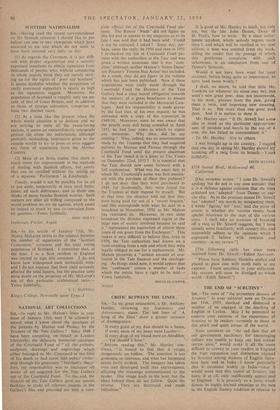NATIONAL ART COLLECTIONS
plete official list of the Courtauld Fund pic- tures. The Renoir ' Nude' did not figure on this list and in answer to my enquiries as to its fate I was told that it had been sold. Could it not be replaced, I asked ? Some day, per- haps, came the reply. In 1950 and then in 1951 I re-checked my list of Courtauld Fund pic- tures with the authorities at the Tate and was given a written assurance that it was ' com- plete,' although neither Matisse's 'Notre Dame' nor Picasso's 'Femme Nue Assise' was included. As a result, they do not figure in the volume which has just been published. Now if these acquisitions were really made through the Courtauld Fund the Director of the Tate Gallery had a clear moral obligation towards the memory of a great benefactor to ensure that they were included in the Memorial Cata- logue. And his responsibility is made graver by the fact that, at his own request, he was entrusted with a copy of the typescript in 1949-50. Moreover, since he was aware that the proofs were still being amended in April 1953, he had four years in which to repair any omissions. Why then, did he say nothing ? Why, indeed, was no announcement made by the Trustees that they had acquired pictures by Matisse and Picasso through the Courtauld Fund until the present chairman of the Tate stated it in a letter to The Times on December 22nd, 1953 ? It is essential that the Tate should now come forward with a full explanation. What was the exact date at which Mr. Courtauld's name was first, associa- ted with the purchase of these two pictures ? I do not deny that they were purchased in 1949, for incidentally, they were found for the Trustees at their request by myself. But at that time the director told me that they were being paid for out of a 'recent bequest,' and this corresponds with what he said in a broadcast in November, 1950, as Mr. Mahon has reminded us. Moreover, in this same broadcast the director expressed regret at the large sum of money involved because he said it " represented the equivalent of almost three years of our grant from the Exchequer." This makes it very difficult to believe that, even in 1950, the Tate authorities had drawn on a fund resulting from a sale and which they were legally obliged to use for a replacement. Mr. Mahon perceives a " certain amount of con- fusion in the Tate finances and the catalogu- ing. As things stand now, it would appear that this 'confusion' covers a number of facts which the public have a right to be told.— Yours faithfully,
DOUGLAS COOPER


































 Previous page
Previous page